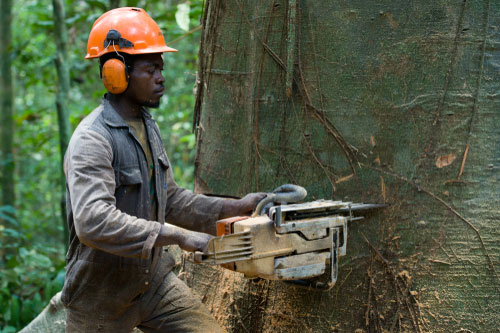"DEFORESTATION"
"DEFORESTATION"
What Is Deforestation?
Deforestation refers to the decrease in forest areas across the world that are lost for other uses such as agricultural croplands, urbanization, or mining activities. Greatly accelerated by human activities since 1960, deforestation has been negatively affecting natural ecosystems, biodiversity, and the climate. The UN’s Food and Agriculture Organization estimates the annual rate of deforestation to be around 1.3 million km2 per decade.
The Causes of Deforestation: Why Is Deforestation Happening?
Multiple factors, either of human or natural origin, cause deforestation. Natural factors include natural forest fires or parasite-caused diseases which can result in deforestation. Nevertheless, human activities are among the main causes of global deforestation. According to the Food and Agriculture Organization (FAO), the expansion of agriculture caused nearly 80% of global deforestation, with the construction of infrastructures such as roads or dams, together with mining activities and urbanization, making up the remaining causes of deforestation.
1. Agriculture is the Number 1 Cause of Deforestation (~80%)
Why is deforestation happening? According to the FAO, agriculture causes around 80% of deforestation. And how does agriculture cause so much deforestation? According to the same report, 33% of agriculture-caused deforestation is a consequence of subsistence agriculture – such as local peasant agriculture in developing countries.
Commercial or industrial agriculture (field crops and livestock) cause around 40% of forest loss – in the search for space to grow food, fibers or biofuel (such as soybeans, palm oil, beef, rice, maize, cotton and sugar cane). It is also particularly interesting to note livestock is believed to be responsible for about 14% of global deforestation. The main reasons why have to do with the large areas require both to raise livestock but also to grow its (soy-based) food.
2. Deforestation Caused By New Constructions (~15%)
The construction of human infrastructures has also been driving deforestation. More specifically, 10% of deforestation can be attributed to new infrastructures that serve the current human lifestyle in four main ways: transportation, transformation and energy generation.
On one hand, roads, rails, ports or airports have been built to move all sorts of goods – from cereals and fruits to spices, minerals or fossil fuels – either directly to trade centers or to transformation sites. So while at first there were only fruit trees, roads soon arrived to allow transporting fruit to other regions. And while some goods were and are collected manually, others such as coal, oil, natural gas, biomass, but also meat, dairy or spirits, required the construction of large extraction, transportation and/or transformation infrastructures.
3. How Urbanization Is Causing Deforestation (~5%)
The populational shift that is leading people to move from rural areas to urban areas is also contributing to deforestation (5%, according to FAO). This urban growth – in which 68% of the world’s population is expected to live in cities by 2050 – is leading to an exponential growth of housing and consumption sites. And as cities become larger so they can host more people, they challenge the natural boundaries surrounding them, often leading to deforestation. This is one of the reasons why deforestation is happening.
Deforestation Effects – How Does Deforestation Affect The Environment?
Deforestation has many consequences for natural ecosystems and it poses serious problems to the resilience of the planet. Let’s take a look at the main effects of deforestation to better understand why it is bad for the planet.
1 – The Effects of Deforestation on Biodiversity

By destroying the forests, human activities are putting entire ecosystems in danger, creating natural imbalances, and putting Life at threat. The natural world is complex, interconnected, and made of thousands of inter-dependencies and among other functions, trees provide shade and colder temperatures for animals and smaller trees or vegetation which may not survive with the heat of direct sunlight. Besides, trees also feeding animals with their fruits while providing them with food and shelter they need to survive.


.jpeg)

Comments
Post a Comment